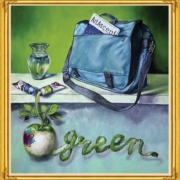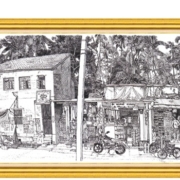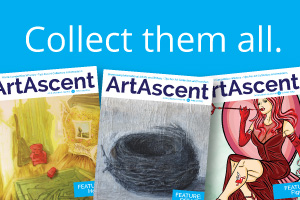Authenticity and provenance are critical
Acquiring art works for investment purposes can be much more complicated than purchasing real estate or publicly traded financial instruments. What you do before you complete a transaction with a seller, whether it be an auction house or dealer, is critical.
As a collector the first step in your due diligence is to ensure that the artist’s agent or dealer is reputable. This applies also in the case of art sold at auction. Claims of authenticity by auctioneers can vary in accuracy. High-end reputable auction houses generally have the means and expertise to ensure what they sell is described honestly. The occasional errors in attribution or identifying the creator and/or the period of a work of art, made by even the most highly respected auctioneers indicate how difficult it is to guarantee authenticity.
The news stories of errors in attribution made by very experienced experts delight those who are skeptical of expertise but they should also serve as a warning to all. It is a rare occurrence when, for example, a work sold at auction as a 17th century follower Rembrandt turns out to be by the master himself. Much more common is the sale of a work optimistically attributed to a well-known artist that is in fact by the hand of an imitator, copyist or forger. The reputation of an auction house or art dealer depends on the accuracy of their attributions and their description of a work of art. Any serious collector is advised to exercise caution. It is wise to remember that the art market has justifiably been described as “the last unregulated frontier of commerce.”
If absence of regulation were not enough to scare off investors in art, there is something even more troubling affecting the art market. Worldwide commerce in the sale of illicitly acquired works of art generates enormous profits. Even the works of emerging or young artists, such as those in this magazine, appear from time to time on the Interpol list of stolen art works. Add to this the highly lucrative business of art forgery, that is not entirely restricted to old masters, and you have a marketplace where it is impossible to exaggerate the importance of the warning “buyer beware.”
When acquiring art, be sure to investigate who you are doing business with. You don’t want to acquire a work that you are assured is an authentic creation of a particular artist only to have it proved otherwise when you are disposing of it. A certificate of authenticity provided by a dealer may or may not be of value. After all, it is just a piece of paper that is only of value if the signing expert is widely regarded as reputable. With the work of emerging artists, you can generally be assured of authenticity and provenance by a dealer who has a direct and ongoing relationship as representative of the artist.
Authenticity is more of concern with the work of deceased artists than of living ones. However, it is not unknown for the work of living artists to be copied, reproduced and forged. The wise and careful collector will always assure himself or herself that what they are buying is exactly what it is purported to be. If it is an old work of art, then the provenance is of critical importance. One must be supplied with evidence of who owned the work in the past, when they bought it and when they sold it. Examine the artwork carefully to determine that it is exactly as described by a dealer or an auction house. This includes checking the medium, dimensions, condition and, in the case of multiples such as prints, photographs and cast sculpture, the date when they were made and the authenticity of the artist’s signature. Of course, you should also practice this due diligence when buying art, even if it is by an up-and-coming artist.
Whether you are making a small or large investment in art, you must, without fail, ensure by every possible means that what you are acquiring is genuine. If you have any doubts whatsoever, either forgo the purchase or consult a highly reputable advisor before deciding to proceed.
By Dr. Alan McNairn







